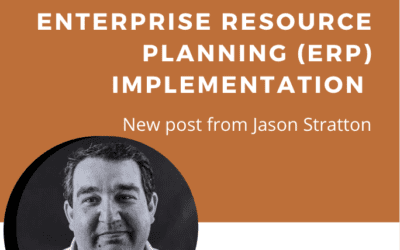By Ron Wolfe, Vice President and Senior Relationship Manager, KeyBank
Linda Hamilton, Vice President and Senior Relationship Manager for KeyBank
Thinking of growing your business by buying another company? For organizations wishing to enhance core operations or develop new revenue sources, acquisition may be the way to go; but only if you can justify the purchase as more beneficial than reinvesting back into your existing business.
Adopting a growth by acquisition strategy is generally reserved for organizations that have reached a level of maturity that produces a stable and predictable cash flow with consistent earnings. The strategy begins with a straightforward appraisal of the financial health, wherewithal, and capacity of your organization to absorb another company with minimal disruption to both businesses. It also entails careful planning throughout all three phases of the acquisition process: the purchase, the integration, and the growth stage.
Can your company handle an acquisition?
The financial health of your company will determine its capacity for an acquisition. Not only must your company be profitable, it must remain profitable in its core business throughout the acquisition and integration process. It’s important to set strict parameters, upfront, that quantify what the company can afford.
Each industry and type of business has different metrics to measure financial health, but year-over-year sales and profit growth are a given for all. The business should have a history of improving free cash flow (FCF) and expanding cash reserves. Having a FCF-to-operating-cashflow (OCF) ratio higher than 50% and preferably closer to 70% demonstrates a strong capacity for new investments.
Your quick ratio (QR) and debt service coverage ratio (DSCR) should both be above two to curtail risks of a cash flow crunch. Cash reserves should exceed three-quarters of operating expenses, at a minimum. It is also wise to boost credit lines to twice the cash reserve level, beforehand.
In addition to pure financial strength, an acquiring company should have the management capacity to run a larger entity. While some of the talent can come from the target business, the ultimate management team needs to have a breadth of expertise, depth, and experience.
Evaluate tangible and intangible benefits of acquisition
A strategic acquisition should bring both tangible and intangible benefits to the business more quickly and economically than can be gained organically through reinvestment. The acquisition needs to grow future profits, by either boosting revenues, cutting relative expenses, or doing both. Some ways an acquisition can improve revenue and gross margins include opening new markets, adding new customers, or gaining access to new products. An acquisition can reduce expenses through synergies, such as the consolidating of administrative and marketing departments, and office & warehouse space. Other areas of expense saving might include improved pricing power with suppliers or technology improvements. A combined entity also has the capacity to refinance debt at lower rates.
Don’t overlook the value of intangibles that can impact operations. Conventional intangibles include intellectual property (IP), trademarks, patents, copyrights, brand reputation, and goodwill. Digital assets can include websites, email lists, mobile apps, blogs, and social media followers. Social media, digital traffic, and data analytics can be leveraged into future growth drivers.
What’s your ideal acquisition candidate?
As mentioned, your pool of potential acquisition targets will be defined by your financial capacity. Ideal candidates are companies which can be immediately accretive to earnings. Targets which have strong FCF are preferred, but will command a larger premium. A “rule of thumb”, to keep acquisitions manageable, is to limit them to no more than 20% of your current business’s size. That said, there will always be prudent exceptions. Larger acquisitions should be justified by compelling benefits, such as extraordinary alignment in products or clients which drive higher gross profit margins or operational synergies which drive exceptional cost savings.
Choose the right bank to help you grow
As with any business growth strategy, working with an experienced commercial banker who understands your industry, market, and business objectives is critical for success. A banker with expertise, capital, and flexibility can accommodate your organization’s lending, expansion and acquisition needs, and help you navigate financing options to successfully acquire a business and grow your organization.
About the author:
About the authors: Ron Wolfe is vice president and senior relationship manager for KeyBank. He may be reached by phone at 503-554-4183 or email at ron_j_wolfe@keybank.com.
Linda Hamilton is vice president and senior relationship manager for KeyBank. She may be reached by phone at 503-644-1943 or email at linda_r_hamilton@keybank.com.
This material is presented for informational purposes only and should not be construed as individual tax or financial advice. Please consult with legal, tax and/or financial advisors. KeyBank does not provide legal advice. ©2019 KeyCorp. KeyBank is Member FDIC. All credit products are subject to credit approval. CFMA #190823-642914



